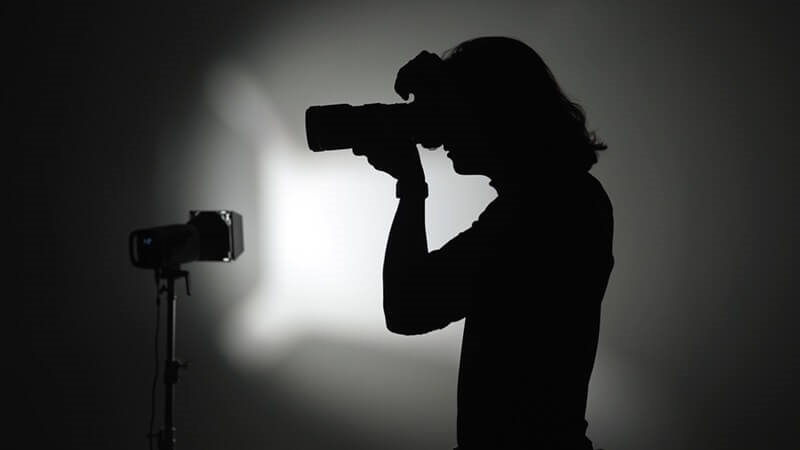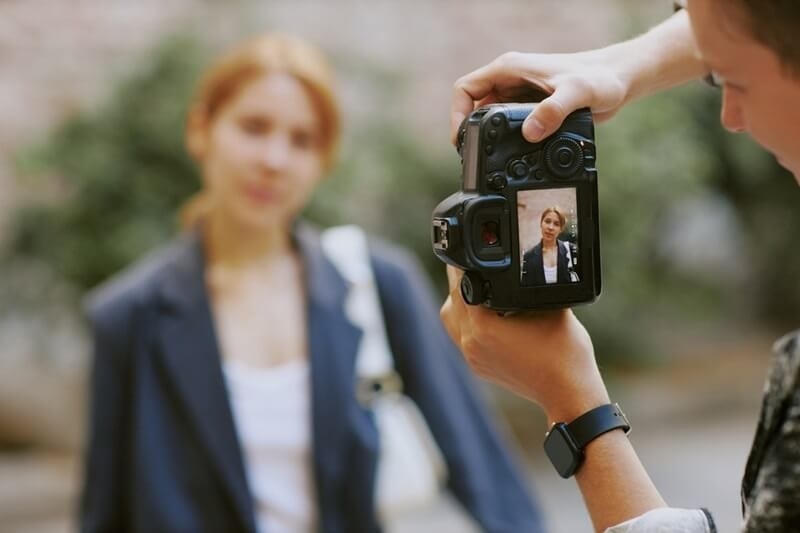
If you've ever looked at a picture and felt that the photographer captured not just a face, but a story, you've felt the power of portrait photography. This portrait photography guide was designed to open the secrets of great portraits to photographers, from beginners to seasoned amateurs. Within the first steps of learning how to take better portraits, you’ll also encounter essential posing tips for portraits, practical budget portrait photography tricks, and advice on avoiding common portrait photography mistakes.
Portrait photography can capture expressions, emotions, and personality in a single moment. You might be using natural light outside, setting up a simple portrait lighting system inside, or just having fun with affordable equipment – this portrait photography guide will give you practical tips on how to take your portrait game to the next level.
Portrait photography is not necessarily about taking a snap—it's about telling a story. A great portrait tells a story, evokes emotion, forges a connection, and leaves a lasting impression. Whether shooting professional headshots, authentic lifestyle portraits, or anything in between, mastering the basics can make all the difference. This portrait photography tutorial is designed to offer actionable tips, no matter your camera of choice—smartphone, DSLR, or mirrorless.

When it comes to how to capture better portraits, the key is in preparation, rapport with your subject, and careful technical decisions.
The greatest portraits are taken of a relaxed subject. Take time to chat, relax them, and elicit natural expressions. Sincere emotions always look better than stiff smiles.
Prime lenses such as 50mm or 85mm work best for portraits because they provide flattering compression and shallow depth of field, neatly separating the subject from the background.
Take photos with wide apertures (f/1.8, f/2.8) to soften backgrounds and isolate the subject. Use wider apertures with more than one person in the shot to ensure sharpness.
Apply the rule of thirds, leading lines, or set your subject in front of textured or plain backgrounds to create depth. Even with a simple portrait lighting setup, composition will be the secret to going from mediocre to professional.
Perhaps the most underrated photography skill is posing your subject. Solid background posing tips for portraits can make all the difference between an awkward and beautiful photo.
Rather than rigid poses, tell your subject to move naturally. Easy movements—walking, fidgeting with clothing, or leaning ever so slightly—make portraits appear relaxed and candid.
Hands tend to betray nervousness. Encourage natural positions, such as resting on a hip, crossing lightly, or holding something. Skip clenched fists or loose arms.
Small head tilts, forward lean, or a slight turn to the side tend to draw attention to features more than coming in straight on. Get your subject to try things out.
The eyes can influence a blank expression versus a friendly smile. Get your subject into comfortable poses, and shoot bursts to capture brief moments.
Even experienced photographers can get caught out. Knowing some common portrait photography errors helps save time, produce better results, and increase confidence in your work.
Flat or harsh light can destroy portraits. Always test the direction, strength, and quality of light. Harsh mid-day sunlight, for instance, produces unflattering shadows.
Excessive skin smoothing or overuse of filters can rob portraits of their natural look. Subtle adjustments enhance; over-editing detracts.
Busy or cluttered backgrounds vie with the subject. A plain wall, out-of-focus nature background, or neat studio arrangement always does best.
Subjects usually don't know how to pose. Without your direction, the photos will be stiff. Always provide gentle direction and encouragement.
Not all can afford expensive equipment, yet amazing portraits can be made with creativity. These budget portrait photography hacks demonstrate that artistry can triumph over equipment many times.
Windowlight is free and makes beautiful portraits when softened with a sheer drapery. Golden hour outside generates flattering warm tones.
A plain white poster board or aluminum foil on cardstock can reflect light back onto your subject's face, filling in shadows.
Hanging a sheet, utilizing colorful walls, or blurring clutter through wide-aperture shooting. Cost-effective creativity wins out over expensive backdrops.
In place of expensive studio lights, clamp lights fitted with daylight bulbs and diffusion material (such as a shower curtain) can replicate softbox lighting.
Lighting can transform your work overnight. The best part? A simple portrait lighting setup doesn't need a studio loaded with gear.
Put your subject in front of a large window with indirect lighting. Set up a reflector across from the window to illuminate shadows. This basic setup makes stunning indoor portraits.
Placing a single softbox or umbrella light at 45 degrees creates flattering shadows and depth. Vary the distance to adjust softness.
Use a weaker fill light opposite your main light. This is balanced and maintains depth, ideal for headshots and business portraits.
A small light placed behind your subject creates highlights at the edges to distinguish them from the backdrop, creating that professional finish to portraits.
For those wanting to take it to the next level, these advanced techniques can help hone your craft:
This portrait photography manual is heavy on techniques, but the real secret lies in practice. Photography is technical and emotional—it requires repetition, experimentation, and patience. The more you photograph, the more your decisions become second nature.
Portrait photography depends just as much on your skills with people as it does on your skills with your camera. Using this portrait photography guide, you can learn how to improve your portrait photography skills, practice essential posing tips, and understand common mistakes to avoid, resulting in a marked improvement in your results. Combine this with tips for budget portrait photography, and you will set yourself up with quality portrait photos using simple portrait photography lighting to create professional and timeless portraits, regardless of the equipment you're using or the budget you have to spend.
Great portraits are not created with expensive cameras; they are created with observation, empathy, and a creative eye. Master these practices, keep shooting, and watch the portraits you shoot start to tell stories that will endure in your family for decades.
This content was created by AI